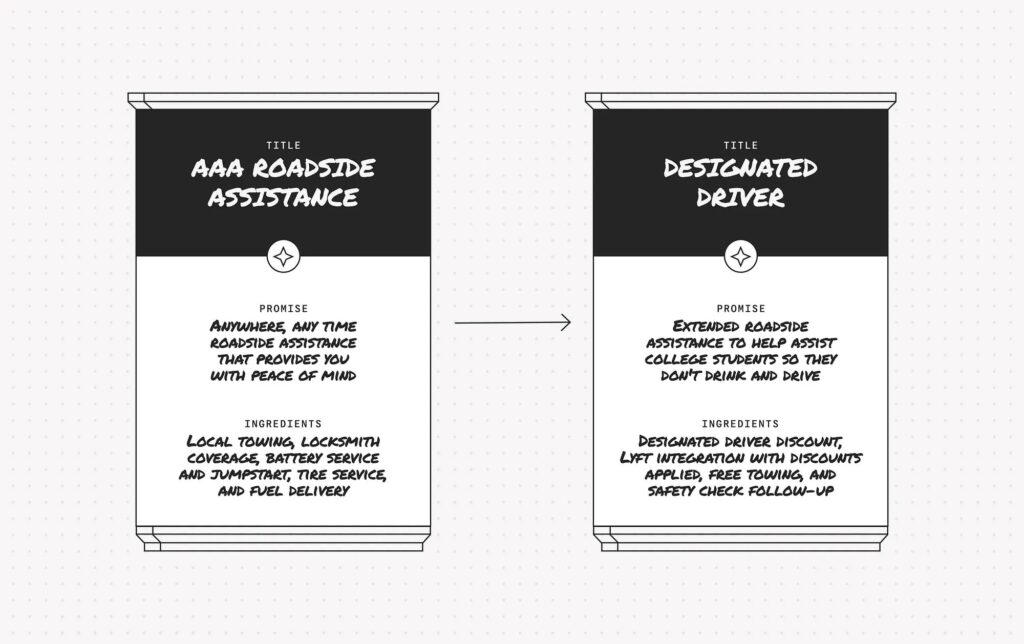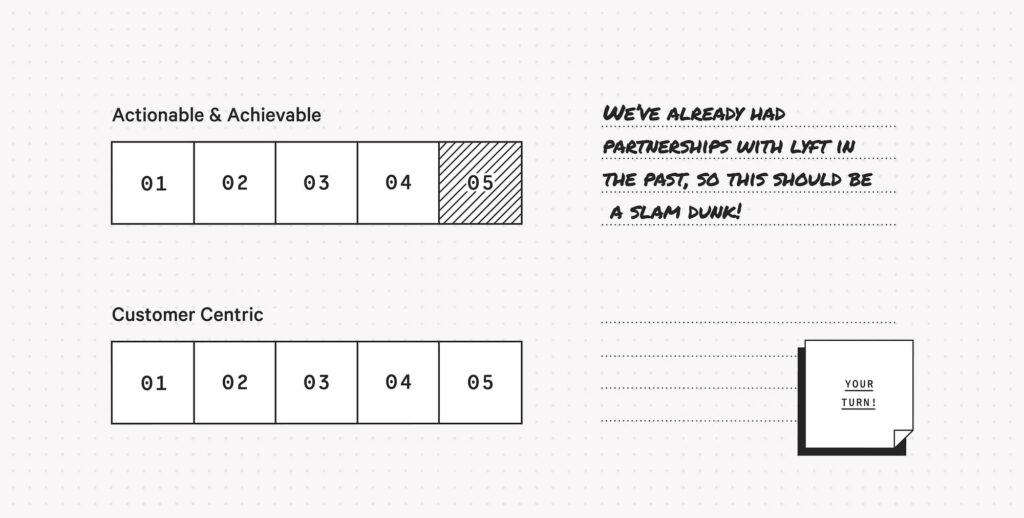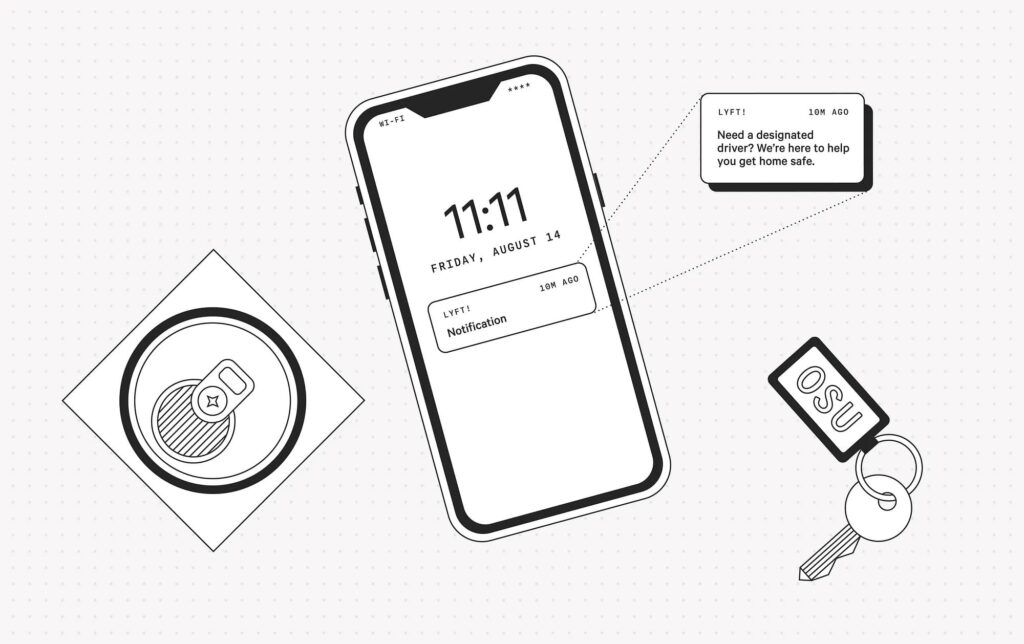At Supply, one of our founding principles is:
Companies worth working with already have great ideas.”
On the surface, this might seem like a mantra that makes it easy for us to avoid partnering with companies that don’t approach us with a “great idea” in hand, but it’s quite the opposite. It is a call for us to remember that companies with a clear mission attract talented people who are invested in both the company’s success and in the customers they serve. They are deeply entrenched in the challenges of the business and the problems facing their customers, and because of this, they are often brimming with great product ideas. Unfortunately, most companies lack a process for fostering and evaluating internal ideas, especially when faced with the challenge of deciding which, among many, are worth pursuing.
So how do we help our clients identify, clarify and envision their great ideas, and then determine which ones are worth pursuing? We look to the humble soup can. More about that in a minute, though. Let’s start at the beginning.
First, talk to your team and collect ideas
Interview individual team members and ask them to share their product or service ideas. Aim for a one- to three-sentence description of each one. Don’t worry about vetting at this point. Once you’ve talked to all team members and feel like you’ve amassed a decent collection of ideas, identify and merge any duplicates.

Next, come together and strengthen each idea as a group
Once you’ve got your hopper filled with ideas, bring your team together to discuss and strengthen those ideas. Give yourself some time to do this — consider dedicating one to two days to workshop them. This may seem like a big investment, but if even one idea worth pursuing rises to the top, it will have been worth it. This is how we approach it:
Step 1
Depending on the size of your company, you’ll likely want to split your team into smaller groups. It’s been our experience at Supply that the most productive groups are often composed of individuals who represent different roles in the company. The ideal group might consist of an engineer, a sales associate, a designer and an executive, for instance.
Step 2
This is where the soup comes in. You’ll want to evenly divide up all of your ideas amongst the groups (we usually have them pick the ideas out of a hat). Then have the groups turn their selected ideas into concepts. They will need to give each one a clever product name, write a value proposition, and identify what essential features are required. We like to use a soup can illustration as the framework for this stage of the process. Each concept gets turned into a label on a can of soup that has a name (your clever product name), a promise (your value proposition), and ingredients (the features of your product idea).
You’ll want them to spend about five to ten minutes working on each concept. It’s best to limit their time so that they act on intuition and have less opportunity to second-guess themselves.

Step 3
Once they have completed their initial draft of each concept, have the groups exchange soup cans with one another. Now they are going to explore how those concepts might evolve when thought about through the lens of a different audience, and through the lens of an emerging trend. Doing so will help ensure that your final product is relevant in the marketplace and meaningful to your intended audience.
You can either provide the groups with audience personas and trend descriptions, or you can give them a few minutes to identify their own. Have them look for outlier trends and less-frequently considered audiences, then write out how the concept might change when viewed through these new filters. Challenge them to be willing to completely overhaul the concept if need be.


Step 4
By now each concept should consist of one or more soup cans accompanied by notes on the impact of emerging trends and/or a potentially unique audience. They should be starting to feel much more robust. Have each group swap concepts once more and spend some time storyboarding out a hero scenario for each one. A hero scenario is the description of a customer’s experience from beginning to end that demonstrates the core value of a concept.
If some groups are uncomfortable drawing, don’t fret — have them describe the scenario in words. Encourage them to write out what the customer is thinking as well as what they are doing, as this may surface additional opportunities.

Step 5
Lastly, have those same groups take one final stab at rewriting the soup can labels. At this point, they will usually feel like they need to be updated.

Once you’ve finished refining, critically assess each concept as a team
By now you should have a number of well-thought-out concepts that have been put through their paces. Some people will naturally develop a favorite or two, so how do we impartially identify which ones have real potential?
Begin by defining what a successful concept looks like. We usually challenge our clients to grade each one using the following questions: Is the concept actionable and achievable? Is it customer-centric? Is it differentiated? Does it align with the company’s vision? Before you begin the grading process, you will want to discuss as a group what each of these terms (e.g. actionable and achievable, customer-centric, differentiated, aligns with vision) means and looks like to ensure that everyone is aligned.

Then visualize the top concepts
At Supply, we believe that one of the easiest ways to determine whether or not a concept is viable is to jump to the end of the product-development process. This means marketing your “new product” to potential customers for feedback.
Choose a few of the top-scoring concepts to push forward and continue exploring. You may even find that some concepts overlap and can easily be combined. Once you’ve narrowed it down, the next step is to create mock marketing web pages for each one. These should include a value proposition and an overview of the core features, accompanied by supporting UI mockups, in order to help it feel more compelling and real. These don’t need to be actual web pages — static comps created with the aid of a designer work just as well.

Now get feedback from potential customers
Rather than simply asking participants to pick a favorite, use your mocks as prompts for a deeper conversation. Lay them all out and ask your participants to read through each one and talk to you about what comes to mind. Which concepts resonate with them and why? How would each product impact them? What’s unattractive, what’s questionable, and why? Use each conversation as an opportunity to learn more about your customer, their world, and their needs, so that you can strengthen the concepts that resonate with them. You may even identify new concepts that you had not previously considered
Finally, share what you learned
Once you’ve spoken to potential customers and collected their feedback, you’ll want to share everything you’ve learned with your company’s leadership team. At this point in the process, you will have taken a one- to three-sentence description of an idea and turned it into a fully formed product vision that has been evaluated by customers. Seeing how a product will be marketed and sold, as well as how customers have responded to it, makes it much easier for your company’s leadership team to determine which ideas are worth investing in.
So how do you get your company to buy into working this way?
If you believe this process would work well in your company, then you’ll probably need to get buy-in from your team. Here is what we believe you and your company stand to gain from working this way:
- Avoid prematurely killing ideas with potential value just because the details haven’t been fully thought through yet
- Avoid pursuing opportunities that don’t have a strong value proposition and that likely won’t be adopted
- Standardize the way opportunities are represented so they can be honestly compared and evaluated
- Build a culture that supports experimentation and a learn-fast mentality that is customer-centric
- Drive alignment across your organization and facilitate funding and development conversations
We’ve helped many companies, large and small, integrate this process into the way they work. It’s been used to help auto manufacturers identify and develop new service offerings in a repeatable way. More recently we used this process to help a nonprofit begin developing a large-scale online platform for low-income first-time homeowners. It’s a tried-and-true process that has worked for them, and it can work for you and your company, too. You’ve got this!